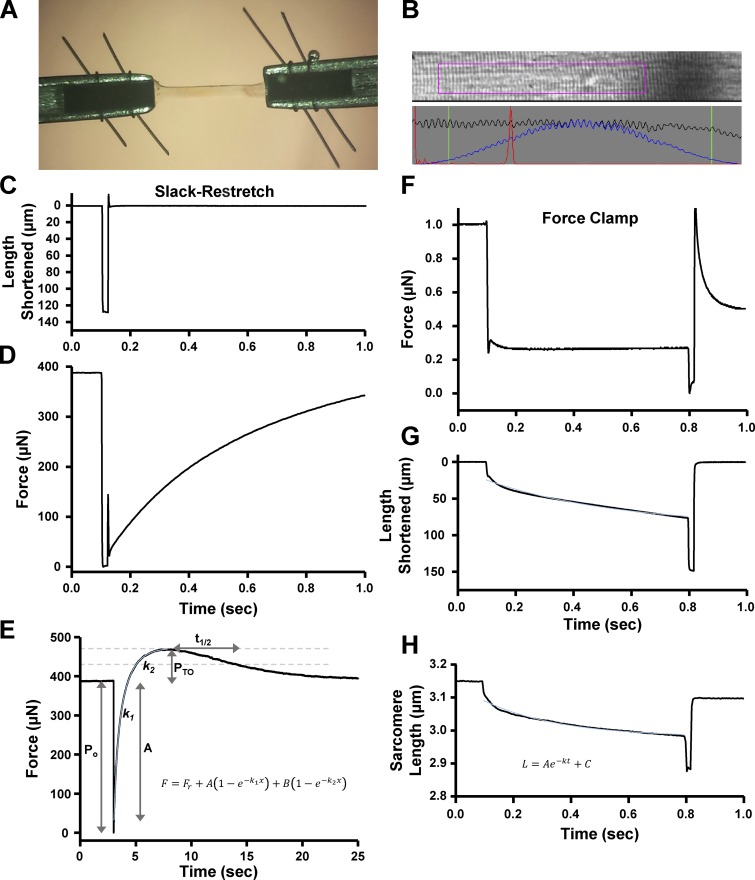Figure 1.
Analysis of permeabilized skeletal muscle fiber mechanics. (A) A permeabilized slow-twitch or fast-twitch skeletal muscle fiber (∼1,000 µm long) was mounted between a motor and a force transducer. (B) Sarcomere length was monitored via IonOptix SarcLen system, which used a fast-Fourier transform algorithm of the video image of the fiber. (C and D) Muscle fiber length (C) and force (D) during a slack–restretch protocol. The muscle fiber was allowed to develop steady-state tension at each pCa, then the fiber was rapidly slacked (∼15% original muscle length) and restretched to original muscle length to elicit force redevelopment from near-zero tension. (E) Schematic of force redevelopment analysis (see Materials and methods for further description). (F–H) Force (F), muscle length (G), and sarcomere length (H) are shown during a submaximal force clamp. Permeabilized slow-twitch skeletal muscle fibers were adjusted to a sarcomere length in which the thin filaments were outside of the C-zone (SL ∼3.15 µm) and Ca2+ activated to ∼30–40% maximal force. Then a series of submaximal force clamps were performed to drive thin filaments into the C-zone (see Fig. 7 A). (H) Schematic of analysis of sarcomere length trace during loaded shortening (see Materials and methods for description of analysis). Fitted curves (in light blue) are shown in E, G, and H.

